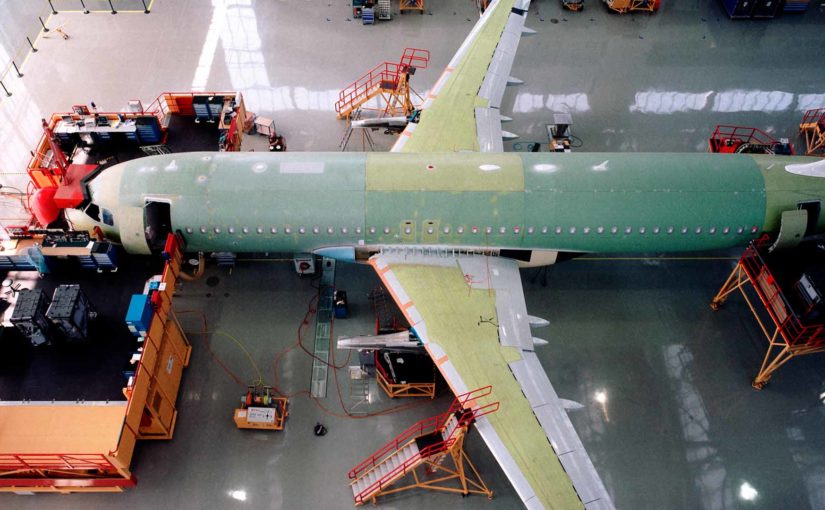Across the country, tens of thousands of manufacturing plants create everyday necessities as commonplace as dress shoes, fishing reels and even your neighbor’s Weber grill. But American innovation doesn’t stop there: think of mind-bending feats of creativity like the futuristic vehicles developed at the Tesla Gigafactory and the gargantuan 440-passenger Boeing 777—both manufactured right here in the United States.
All this old-fashioned American manufacturing has one major drawback: its reliance on “hot” processes. Heating, melting, molding, finishing and packaging products are mostly driven by fossil fuels that emit CO2, other pollutants and excess heat. All these emissions—which need to be addressed and are regulated by OSHA standards and EPA regulations—are a consequence of the need to produce heat.
Efficiency leads the charge in heat recovery
The method a company chooses to capture excess heat created by their processes primarily depends on how it will impact the plant’s internal efficiency, community standing and budget.
“It’s not a pursuit of emissions reduction,” says Glenn Schumacher, Senior Business Developer at Airgas, “It’s a pursuit of efficiency.”
What’s happening in heat recovery?
The most common heat recovery technique is to preheat air using hot flue gas with either a recuperator (a special-purpose energy recovery heat exchanger positioned within the supply and exhaust air streams of an air handling system) or a regenerator (a type of heat exchanger where heat from the hot fluid is intermittently stored in a thermal storage medium before it’s transferred to the cold fluid). Recently, though, some plants have switched from conventional non-preheated oxygen to preheating oxygen in order to recover energy from oxy-fuel furnaces, which would otherwise be wasted.
The changing costs of oxygen and natural gas continually impact plants and how they choose to recover heat, so the preferred method may change over time as costs of the gases used in heat recovery rise or fall. The benefit of heating pure oxygen instead of air is reduced emissions leaving the plant through the stacks, as well as a cost benefit directly attributed to the effective use of gas throughout the plant. This saves money in the long run and makes oxygen heating a more appealing recovery technique. Unless, of course, the cost of the oxygen outweighs how much the company is expected to save.
Environmental impact
As more companies begin implementing practices that reduce their environmental footprint, manufacturing plants are also following suit and seeking environmentally-friendly practices, including heat recovery.
“Combustion of fossil fuels inevitably involves the release of pollutants, harmful to both [the] environment and people,” says Taekyu Kang, HeatOx R&D Project Manager at Air Liquide. “Industries have taken long strides to curb those emissions; not only to be compliant with government regulations but also to show their stewardship to shareholders that the companies are environmentally responsible.”
Community impact
Like any business that could potentially pose a threat to a community’s status quo—such as a waste management facility, skate park or amphitheater—manufacturing plants need to establish trust with their community members to keep operating effectively.
As Schumacher explains, “When companies are in a community and they want to expand… if they are perceived as a nuisance to the community—pollution being a significant one—they’re going to have a community working against [them].”
The emissions a plant releases into the atmosphere can have a direct effect on air quality of the surrounding neighborhood, so when a company seeks out ways to minimize those emissions through an effective heat recovery process, the community typically rallies in support. In fact, 55 percent of global online consumers across 60 countries say they are willing to pay more for products and services provided by companies that are committed to positive social and environmental impact, according to a recent Nielsen study.
Financial impact
Saving the Earth and protecting your community are both worthwhile undertakings, but neither can happen if the company isn’t making a profit. Luckily, increasing efficiency and lowering emissions by means of heat recovery can also save companies money that they’d otherwise lose through ineffective practices and non-compliance fines.
“Plant efficiency is directly related to plant operating cost—the higher the plant efficiency, [the] lower their operating cost,” Kang says.
Plants must also adhere to regulations dictated by the EPA intended to monitor their emissions and keep them at a safe level. “Federal, state and local regulations require that the plants be compliant with their emission levels. When a plant is out of compliance, [it] results in fines and huge fees.”
Efficiency above all else
Staying in compliance helps your company avoid costly fees associated with emissions violations. Simultaneously, using heat recovery practices that are mindful of the environment is a proven way to keep in good standing within your community, and since your plant requires less external energy to operate, you save money while lowering emissions.
The key to effective heat recovery lies not in one particular form of capturing excess heat—it’s finding the perfect combination of cost savings, environmental conscientiousness and community rapport that benefits your business, your community and your world.
